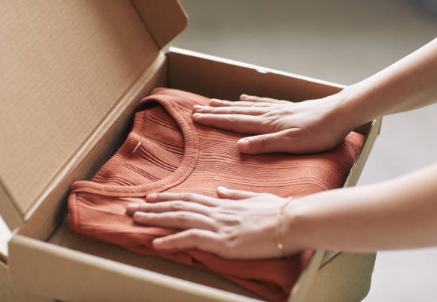How to Store Clothes in Cardboard: A Complete Guide
Introduction
Storing clothes properly is essential to maintain their longevity and quality. While there are various storage options available, using cardboard can be a cost-effective and practical choice. In this article, we will discuss the different aspects of storing clothes in cardboard, including the benefits, preparation, packing techniques, and tips for maximizing space. Read on to discover how you can effectively store your clothes in cardboard boxes.
1. Understanding the Benefits of Storing Clothes in Cardboard
Cardboard boxes offer several advantages when it comes to storing clothes:
- Cost-effective: Cardboard boxes are widely available and relatively inexpensive compared to other storage solutions.
- Lightweight and portable: Cardboard boxes are easy to move around, making them convenient for both short-term and long-term storage.
- Breathable: Cardboard allows air circulation, reducing the risk of mold and mildew formation.
- Protective: Cardboard provides a certain level of insulation, protecting your clothes from dust, sunlight, and pests.
Now that we understand the benefits, let's dive into the process of storing clothes in cardboard.
2. Preparing Your Clothes for Storage
Before packing your clothes into cardboard boxes, it is crucial to prepare them properly:
- Clean: Ensure that all clothes are freshly laundered or dry cleaned to prevent stains and odors from setting in during storage.
- Repair: Take the time to mend any loose buttons, hems, or tears to prevent further damage while in storage.
- Organize: Sort your clothes by category, such as shirts, dresses, pants, or seasonal items, to make it easier to find specific items later.
By following these preparatory steps, you'll ensure that your clothes are ready for storage and will remain in good condition throughout their time in the cardboard boxes.
3. Choosing the Right Cardboard Boxes
Not all cardboard boxes are created equal. When selecting boxes for clothing storage, consider the following factors:
- Size: Choose boxes that are suitable for the types of clothes you plan to store. Smaller boxes work well for delicate items, while larger boxes are ideal for bulkier garments.
- Quality: Opt for sturdy cardboard boxes that can withstand the weight of your clothes without collapsing or tearing.
- Handles and lids: Boxes with handles and lids are more convenient to stack, transport, and access when needed.
By carefully selecting the right cardboard boxes, you can ensure that your clothes are stored securely and efficiently.
4. Packing Techniques for Clothes in Cardboard
Efficient packing techniques can help maximize space and protect your clothes:
- Fold and stack: Fold your clothes neatly and stack them vertically to utilize the full height of the box.
- Use tissue paper: Place tissue paper between delicate items, such as silk blouses or knitwear, to prevent friction and potential damage.
- Roll instead of fold: Rolling clothes, like t-shirts or jeans, can save space and reduce wrinkling.
- Label: Clearly label each box with its contents to easily locate specific items when needed.
By adopting these packing techniques, you can optimize the storage space in your cardboard boxes while keeping your clothes in excellent condition.
5. Maximizing Space with Cardboard Box Storage
When it comes to storing clothes in cardboard boxes, space optimization is key. Here are some tips to maximize the available space:
- Utilize vacuum bags: Vacuum-sealed bags can compress clothes, reducing their volume and allowing you to store more in each box.
- Stack strategically: Stack the boxes in a stable and organized manner, leaving enough space for easy access and minimizing the risk of collapse.
- Consider shelving units: Using shelves can provide additional storage space and help keep your cardboard boxes organized.
By implementing these space-maximizing strategies, you can make the most of your storage area while keeping your clothes safely stored.
6. Tips for Long-Term Storage
If you plan to store your clothes in cardboard boxes for an extended period, consider the following tips:
- Climate control: Opt for a storage area with stable temperature and humidity levels to prevent damage from extreme conditions.
- Check periodically: Regularly inspect your clothes for any signs of damage, pests, or mold, especially if stored for more than six months.
- Rotate clothes: To avoid prolonged pressure on specific areas, rotate folded clothes periodically.
Adhering to these long-term storage tips will help preserve the quality of your clothes and ensure they remain in excellent condition.
7. Storing Different Types of Clothes in Cardboard
Depending on the type of clothes you plan to store, there are additional considerations to keep in mind:
- Delicate fabrics: For delicate fabrics like silk or lace, consider adding acid-free tissue paper to prevent discoloration or damage.
- Leather and fur: Ensure that leather and fur items have proper ventilation to prevent moisture buildup, which can lead to mold or mildew.
- Winter clothing: Clean and waterproof winter garments before storage to ensure they remain in optimal condition during the off-season.
By taking these specific clothing types into account, you can store each item appropriately and maintain their quality over time.
8. Avoiding Common Mistakes
To ensure a smooth storage experience, avoid these common mistakes:
- Using damaged boxes: Do not use boxes with structural damage, as they may collapse under the weight of your clothes.
- Overpacking: Avoid overloading the boxes, as this can lead to damage and make accessing specific items challenging.
- Storing in damp areas: Moisture can cause mold, mildew, and musty odors, so avoid storing your cardboard boxes in damp or humid locations.
By steering clear of these mistakes, you can ensure your clothes remain in top condition throughout their time in storage.
9. Retrieving Clothes from Cardboard Storage
When the time comes to retrieve your clothes from storage, follow these steps:
- Inspect: Check each item for any signs of damage, pests, or mold. Air out the clothes if necessary.
- Wash or dry clean: Launder or dry clean your clothes before wearing them to ensure a fresh and clean appearance.
- Store properly: If you plan to store the clothes again, follow the preparatory steps mentioned earlier before repacking them in cardboard boxes.
By following these steps, you can safely retrieve your clothes and enjoy wearing them once again.
10. Conclusion
Storing clothes in cardboard boxes can be an excellent solution for short-term and long-term storage needs. By understanding the benefits, preparing your clothes, selecting the right boxes, and employing proper packing techniques, you can ensure your clothes stay in excellent condition. Maximize space, consider long-term storage tips, and be mindful of different clothing types to preserve their quality. By avoiding common mistakes and following the retrieval process, your clothes will be ready to wear whenever you need them. Start storing your clothes in cardboard today and enjoy organized and well-preserved garments for years to come.

